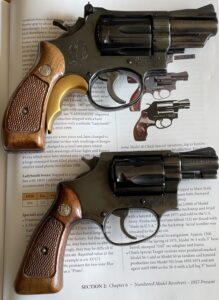Two things that I have absolutely no use for but find oddly appealing. Both of these are kind of old, but I just discovered them in the past couple of days:
1. Lone Wolf shows them as “low stock”, but they do apparently still have 9×18 Makarov barrels for the Glock 42.
I actually learned about this by way of Lucky Gunner’s ammo tests, which I am familiar with, but was reviewing to find data about a specific caliber. I don’t know what advantage this would give me over .380 (ballistically, I think very little), and if I wanted something in 9×18, why wouldn’t I just go out and get a surplus gun? But the idea is just weird enough to turn my crank a little bit. And it is threaded for a suppressor…
2. Speaking of guns in .380 Auto…the Cimarron 1862 Pocket Navy. This is a newly manufactured gun, designed to emulate the look and feel of a 1862 Colt Pocket Navy, but set up as a cartridge-fired gun (instead of a black powder one), and chambered in .380 Auto.
Again, I have no use for this, and why would I carry one over my Glock 42? But it is another one of those things that’s so freaking weird, it turns the crank again. If I saw one turn up used at a good price, it would be tempting.
In other news, I am back from my vacation, as of Tuesday. The original plan was to attend the NRA Annual Meeting in Houston…but that was not to be. So instead, Mike the Musicologist and I spent a few days bumming around looking at gun shops, some in the area around Abilene.
I’ll probably write more about our adventures later, but since this is “random gun crankery”, I’ll mention Caroline Colt Company, which is a nice shop with a lot of quality guns, and a surprisingly good (for the times we are in) selection of ammo.
Thanks to great and good FotB (and official firearms trainer of WCD) Karl for introducing me to the work of the Snub Gun Study Group. As a confirmed snubby guy, I like this idea and wish to subscribe to their newsletter.

My snubbies. Let me show them to you.
Top: S&W 19-3 in .357 Magnum with Tyler T-grip.
Bottom: S&W Model 36 (no dash?) fitted with an Apex Tactical spring kit
(And yes, I consider the 2 1/2″ Model 19 to be a snub gun. As I recall, so did Ed Lovette in his book, The Snubby Revolver. No Amazon link because this was an old Paladin Press volume and prices are through the roof.)
In a rare combination of Smith and Wesson crankery and movie crankery, you can buy Indiana Jones’s S&W. On GunBroker. The “buy it now” price, though, is $5,000,000.00. Which is also the minimum bid. Just for comparison, the gun that killed Billy the Kid went for $6,030,312 not too long ago. (Hattip: The Firearm Blog.)
Lawrence sent over a note earlier this morning: David Chipman’s nomination to head BATFE is being withdrawn. I’d like to believe this is a good thing: maybe it is, but I’m worried the Biden administration is going to nominate someone who is even worse.






